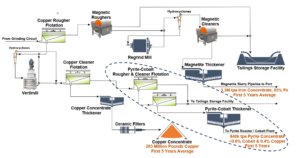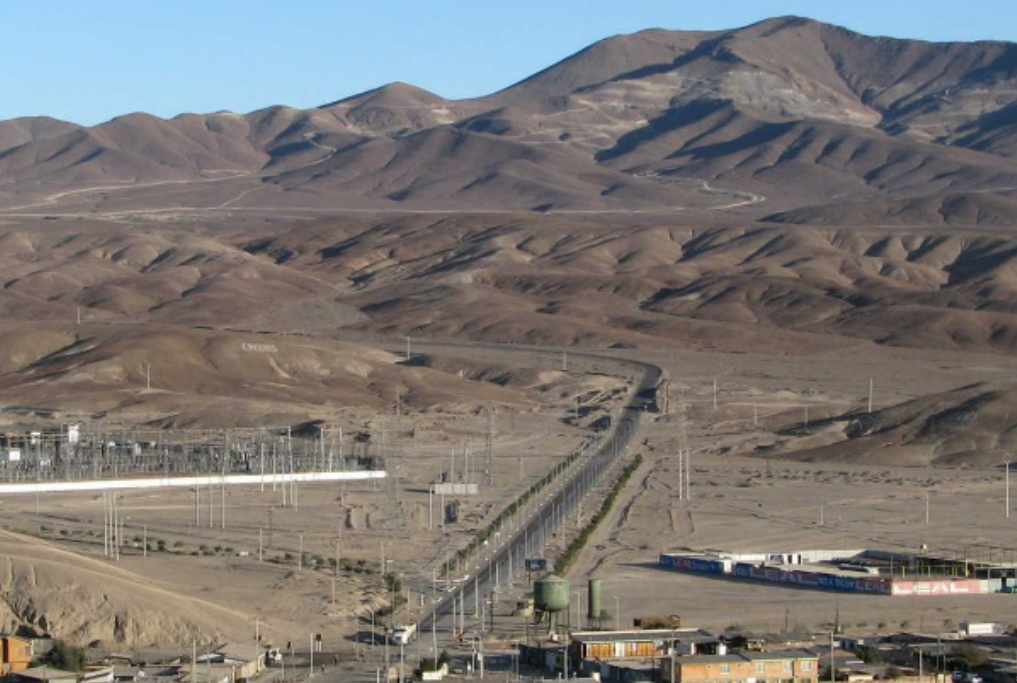Capstone Mining Corp has announced it intends to advance its cobalt project at Santo Domingo in Region III, Chile, to feasibility stage as described in the Santo Domingo Project, Region III, Chile NI 43-101 Technical Report and PEA. The production of battery-grade cobalt sulphate at Santo Domingo is expected to significantly add to the robust copper-iron-gold project and maximises the recovery of future facing metals from this rich resource.
Darren Pylot, Capstone President and CEO said: “Capstone has an incredible opportunity to produce ethically-sourced battery-grade cobalt sulphate from Santo Domingo’s future copper-iron tailings stream. The process is a series of conventional steps, with below zero costs given significant by-product credits.”
Santo Domingo is owned 70% by Capstone and 30% by Korea Resources Corporation (KORES), the Korean state-owned resource acquisition enterprise. The 18 year mine life open pit will see a LOM production average of 60,500 t/d of ore throughput and for the first five years 65,000 t/d. Average annual production for LOM will be 137 Mlb of copper, 4.2 Mt/y of iron and 17,000 oz of gold but for the first five years the annual figure is 259 Mlb copper, 3.3 Mt of iron and 35,000 oz of gold.
“The potential of cobalt production in Chile has been underappreciated for decades while copper and, recently, lithium has been the main focus of investment. Although this market is small, projections for demand growth suggest that it could triple in size by 2030 mainly due to the development of electromobility. As the chemical properties of cobalt extends the life of rechargeable lithium batteries used in electric vehicles, we are seeing a significant boost to exploration and extraction activity. Capstone’s plans for a cobalt feasibility study at Santo Domingo could represent a great step forward and an example of Chile’s potential to become an important world producer,” said Edgar Blanco, Chile’s mining ministry undersecretary.

Capstone says Santo Domingo’s PEA estimated costs of $4 per pound (net of by-products in cobalt operation) positions it to be a unique, fully integrated producer of battery-grade cobalt sulphate. Santo Domingo will be the only cobalt sulphate project in the Americas not dependent on third-party DRC feed and its cobalt processing capacity could supply enough battery-grade material for more than 500,000 electric vehicles (EVs) annually.
Pylot added: “A cobalt operation at Santo Domingo would unlock Chile’s vast potential for this critical metal and it is exciting that Capstone is leading this vision. The selection of a strategic partner due later this year, will accelerate this unique project to recover a future-facing, green metal from a waste stream, a plan that I’m set on making a reality.”
The $20 million work program will consist of two phases and several stage gates. Following the Phase 1 work program in Q1 2022, Capstone will provide an update to the market on final met work, final process design and updated cobalt resources. The feasibility report is expected by Q4 2022 with construction to start in 2023 or 2024 following permitting. The integration of the cobalt project with the copper-iron concentrator has been designed so that, if necessary, pyrite-cobalt concentrate can be safely stored in a lined, wet pond for two years, allowing for the cobalt plant to be built later than the mill. Cobalt production is anticipated to commence by 2025 or 2026.

Capstone’s concept for cobalt recovery is based on its bond with pyrites, which is concentrated by preferential flotation on a tailings stream. Approximately 840,000 t per year of pyrites containing 0.6% cobalt and 0.4% copper is expected to be recovered at this step. The concentrate is fed through a five-stage process consisting of roasting, leaching, copper precipitation, cobalt solvent extraction and crystallisation to yield battery-grade cobalt sulphate heptahydrate. Recovery of cobalt from pyrite concentrate is expected to be approximately 90% at very low cost due to significant by-products from increased copper recovery, sulphuric acid production and energy generation. The flowsheets are simple and incorporate a series of conventional technologies that are used extensively in the mining industry.











